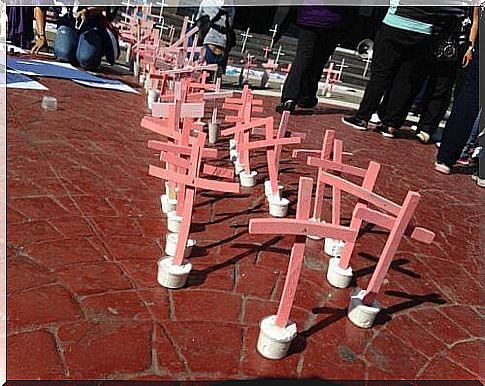Women Of Sand: Femicides In Ciudad Juarez

Humberto Robles, a Mexican playwright, wrote the play Women of Sand ( Mujeres de arena ). It is the testimony of women who speak about the horror of the feminicides in Ciudad Juarez. Women of Sand speaks out against these murders and puts them in the spotlight.
The play is a deeply human portrait of the tragedy of the murders and supports the movement of the families of the murdered women.
Human rights in the theatre
Humberto Robles is a Mexican novelist, screenwriter and he is also a human rights activist. In 2007, the Spanish media reviewed Robles and his work. They wrote: “ Today, Robles is arguably one of the most represented Mexican playwrights in Latin American theater. ”
They also said: “ He is one of the most promising authors of contemporary theater in Mexico, having published important texts about the difficult circumstances of the lives of Mexican women.”
In his play Women of Sand , he examines the murder and disappearance of Mexican citizens through the voices of four women. The characters are a mother, a niece, a sister and also a murdered young woman.
They tell the story of Natalia, Micaela, Lilia Alejandra and Erendira. All three are victims of the feminicides in Ciudad Juarez. Among their testimonies are poems, but also statistics revealing the government’s lack of interest in preventing these crimes.
The total number of disappearances and murders is heartbreaking. The climate of violence is increasing. To date, the authorities have not taken any concrete steps to clarify the data on the feminicides.
The term femicide , femicide in English, refers to hate crimes and murders of women motivated by their gender. The term refers to serious crimes that take place in the context of discrimination and gender violence. This violent crime targets women and girls, who are victims of brutal dehumanization.

Women of Sand : the victims of the Ciudad Juarez feminicides
The majority of the victims have common characteristics. They are the same age (between 15 and 25 years) and they are usually poor. From an early age, these women had to support themselves. The only way to earn a living is often working in factories, the so-called maquiladoras .
The maquiladoras produce products for export. Most orders come from the United States. The companies are subsidiaries of American companies that set up factories in Mexico because of low labor costs.
These young women work 12 hours a day in shifts at minimum wage. Working conditions are often appalling. They have no rights or appropriate working conditions. Turnover is high.
The disappearance of one of these women does not receive too much attention. The terrifying thing is that almost every employee knows a woman who has disappeared.
Pink crosses: a symbol of the lost women
Activists spoke out against the first disappearance more than twenty years ago. The first documented victim was Alma Chavira Farel, who was thirteen years old. Her body was found on January 23, 1993. Her attackers had raped her and then strangled her. The horror of feminicide began with Alma.
At each location of a recorded disappearance, the families of the victims paint, place or bury a pink cross with a black background. These crosses are symbols of feminicide.
However, the authorities often cover them up or remove them. They try to suppress the people who speak out and cover up the terrible tragedy.
People protesting the killings also wear pink crosses. Relatives, friends and supporters organize parades to draw attention to the feminicides in Ciudad Juarez. They take to the streets carrying messages like “ Femicide Nation ” or “ Not one [women] less. They put a cross on every sofa, wall or empty space.

A government unwilling to help stop the tragedies
In conclusion, the perpetrators of violence in Ciudad Juarez go unpunished, especially when it comes to feminicide. Poor management, corruption and negligence on the part of the Mexican authorities have led to a landmark conviction by the Inter-American Court for Human Rights .
In 2009, the Mexico court denounced the feminicides for the first time in history. Unfortunately this did not yield much. The government is still not doing anything about the killings. Women and girls are killed or disappear every day.
For the families of the femicide victims, recognizing the crime is the first step in ending the torment they are going through. Their voice is their primary weapon.









